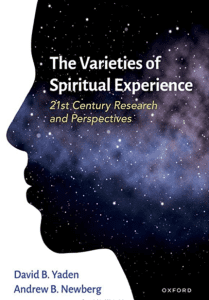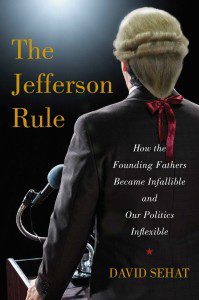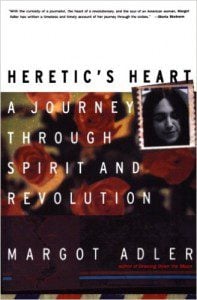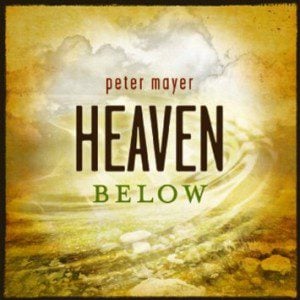This year the Chinese New Year will begin on what we call January 31st on our Gregorian (or “Western”) calendar. And when I was considering a good date to explore both the history and potential contemporary meaning of the I Ching, one of China’s contributions to the classics of world religious literature, a time close to the Chinese New Year seemed auspicious. And when considering criteria such as “longevity, domestic significance, and global spread,” scholars rank the I Ching in the same league as the Jewish Talmud, the Christian Bible, the Muslim’s Qur’an, the Hindu tradition’s Bhagavad Gita, and Buddhism’s Lotus Sutra.
But before proceeding much further, I should clarify a few major issues of nomenclature, spelling, and pronunciation. If you understand Chinese, the simplest approach would be to render the word I Ching in Chinese characters. But in the English-speaking world that leaves us with the dilemma of choosing the best transliteration among the current options, none of which are fully adequate.
For instance, long before I took my first religious studies class, when I first saw the title of this Chinese religious classic written out as I Ching, I assumed it was pronounced “EYE-Ching.” And this was years before Apple started putting an ironically lower-cased “i” in front of all its products, which has only made the traditional English rendering even more confusing: making it more likely that the uninitiated will pronounced the title EYE-Ching instead of E-Ching. That more familiar I Ching spelling comes from the transliteration process known as the Wade-Giles system, which started in the 19th-century and was popular through most of the 20th-century. As you can perhaps guess, Wade and Giles were not Chinese; they were British sinologists.
In recent decades, the Pinyin system (literally “spelled-out sounds”) which was developed by the Chinese people themselves, has become the new standard. And in Pinyin, the title of this world religious classic is Yijing, which avoids the confusion of spelling the English word with the first letter “I” and pronouncing it with a hard “e,” but it has the problem that at least for now English speakers tend to much more easily recognize the word I Ching than Yijing. There’s a similar issue with the less accurate (but more familiar) romanization of the Tao Te Ching — spelling it with a “t,” but pronouncing it with as “d.” In contrast, the Pinyin version is less familiar for now, but much more clear for English pronunciation: Daodejing.
And for what it is worth, the minor learning curve necessary to familiarize English-speakers with the more accurate and authentic transliteration of Yijing and related words is worth it, both because it is important, whenever possible, to calling things what the original culture calls them, but also because — if you will allow me a very brief rant — I have long thought that it is a spectacularly bad idea for every language in the world to have a different name for geographically-and-culturally-specific terms. The most prominent example I can think of is that the confusing and unnecessary practice of every country in the world having a radically different name for every other country. Why go to the trouble of inventing the word Germany when we can just call the country what the Germans themselves call it: Deutschland — or Nippon (for Japan), España (for Spain), Hellas (for Greece). The Greek name for Greece (Hellas), of course, makes the term Hellenization much more understandable. Anyway, I don’t want to get too of track. But suffice it to say that learning to recognize the title Yijing is similar to learning to recognize the transliteration Qur’an as a more authentic rending of the title of the Islamic holy book that the common spelling for many years of Koran. Anyway, here endeth the rant.
Returning our focus to the Yijing, I think the first reference I ever saw to this Chinese religious classic was in of all places a G.I. Joe comic book. Not to get too unduly nerdy for those who aren’t Children of the 80s (or who didn’t have children who grew up in the 80s) the gist is that Snake Eyes and Storm Shadow, the two ninjas in the G.I. Joe world, had the same symbol tattooed on their forearm, and it turns out that tattoo is the 63rd hexagram of the Yijing. That hexagram is of “water” over “fire,” and was perhaps chosen to symbolize the opposing tensions that those two characters represented in the G.I. Joe mythos.
More important than unpacking what those 1980s comic book writers had in mind by choosing that particular tattoo is that I remember finding those tattoos so arresting. The design is so simple, but I remember finding it transfixing. As you may know, the Yijing is based on a series of “sixty-four, six-line symbols known as hexagrams.” The first hexagram is six solid lines stacked on top of one another. The second hexagram is six broken lines similarly stacked. The other sixty-two hexagrams are “permutations of these two paradigmatic symbols.”
Another name for the Yijing is the “Classic of Changes” or the “Book of Changes,” and those names likely refer to the Yijing literally being based on a iteration of changes in two basic symbols as well as to the Yijing being a divination manual intended to discern how one should proceed given the flow of the ever-changing universe of which we are a part.
Scholars date the origin of the Yijing’s 64 hexagrams to approximately 3,000 years ago (or 1,000 BCE). And as one scholar has joked, you don’t have to be a Freudian to surmise that those first two symbols are derived from male parts and female parts respectively. If you take a look at those first two hexagrams, I feel that you all are smart enough to infer which sex corresponds to the “tower” created by the solid column of six lines and which sex corresponds to the “tunnel” created by the stack of six broken lines.
And after the initial 64 hexagrams were created, within a century or so,
each hexagram acquired a name, a brief description known as a “judgment,” and a short explanatory text for each of its six lines called a “line statement.” This highly compact document, less than 4,200 characters in length and probably first inscribed on strips of bamboo, became known as the basic text of the Yijing.
The Yijing became increasingly popular and respected — including by the Chinese Emperor in 136 BCE — after the a set of commentaries known as the “Ten Wings” became attached to the basic text in the 200s BCE. And although the historical Confucius, who lived a few centuries earlier (ca. 551-479 BCE) did not write those popular commentaries, they came to be attributed to him likely in much the same way that early Jewish scriptures were falsely attributed to Moses or that early Christian scriptures were falsely attributed to Jesus’s earliest followers figures in order to gain authority and credibility. Nevertheless, because of the association with Confucius, “For the next two thousand years or so, the Yijing held pride of place in China as the first of the Confucian classics.” As a point of comparison, think of the immense amount of close, extended scrutiny that the Western world has given to the Bible and all the ways that the Bible has influenced Western culture. The Yijing has played a similar role in shaping Chinese culture for the past three millennia.
Relatedly, one of the fascinating parts of studying the history of biblical interpretation is that over time the primary unit of interpretation has changed. In more recent times, we tend to look a verse or passage or even a whole book for surrounding context in order to discern a text’s meaning. But in the Middle Ages and before, there were times in which the common practice, especially in monastic circles, was to focus on a single word as the unit of meaning, riffing on that word’s etymology and potential hidden meaning. Likewise, “in imperial China it was not uncommon for a scholar to spend days or even weeks contemplating a single hexagram.”
For many decades, the most popular version of the Yijing in the Western world was Richard Wilhelm’s translation, which was published in German in 1924, then rendered into English in 1950 by Cary Baynes, a student of Carl Jung. That 1950 English version of the Yijing also famously includes a foreword by Carl Jung himself. I own both that version as well as one more recent translation by a Chinese Taoist practitioner instead of by a Western scholar: The Complete I Ching by Alfred Huang, which is now available in a 10th-anniversary edition. If you know of better, more authentic or authoritative versions of the Yijng, I would be interested to know.
For now, I will share a very brief method for using the Yijing. Minimally, you’ll need three coins and a copy of the Yijing. First, center yourself in silence, and silently state your intention, which can be as simple as to seek discernment. When you feel centered, cast the three coins. Each “heads” equals the number 3, and each “tails” equals the number 2. Add up the total represented by the three coins. If the total is an even number, then you write down a broken line. For an odd number, write an solid line. (Make a note for later if the total is 6 or 9 for any of the lines.) You then throw the coins five more times, building your hexagram from the bottom to the top. So, for example, the first hexagram (with all solid lines) would be from throwing all odds, and the second hexagram (with all broken lines) would be from throw six “evens” in a row.
Once your hexagram is built, you find which of the 64 hexagrams it corresponds to, and that description is supposed to relate to the general situation in which you presently find yourself. If you have any of your throws were sixes or nines, then you end by changing those lines to their opposite, finding the new hexagram, and that new “changed” reading is supposed to correspond to where you are headed.
There are more specific details, but that’s the basic idea, and any copy of the Yijing should include more elaborate instructions. But here’s where it gets tricky. As one Western Yijing scholar notes, historically, there has been “no general agreement on how to interpret the results of a Yijing divination and due diligence “required a command of all major commentaries.” And as daunting as that prospect can sound to an outsider, who did not grow up in a culture saturated in Yijing interpretation, that perspective of needing a deep familiarity with the text and interpretative tradition is quite similar to the perhaps more familiar requirements to responsibly interpret the Talmud or Bible.
But although the Talmud or Bible are sometimes used as a divination manual of sorts, the Yijing, to be clear, is precisely intended for divination. And these days perhaps the most well-known reference to divinization may be Professor Trelawney from Harry Potter, who in that series often appeared bumbling, but also had occasional flashes of authentic insight.
All that being said, what might a twenty-first-century religious progressive make of the Yijing? Speaking from my own tradition of Unitarian Universalism, certainly as a classic of world religious literature, the Yijing is part of what we call our 3rd Source, “Wisdom from the world’s religions.” And regarding this ancient divination manual, I think we are called to balance our 1st Source, which calls us to trust our “Direct experience, with our 5th Source, “Humanist teachings which counsel us to heed the guidance of reason and the results of science, and warn us against idolatries of the mind and spirit.” Or as the 4th of our Seven Principles succinctly puts it, we are called to a “A free and responsible search for truth and meaning.” So, how might we freely and responsibly approach the Yijing today?
Before answering this question more fully, let me point to a few more instances in which the Yijing has infiltrated Western culture. In 1965, Bob Dylan told a Chicago reporter that the Yijing is “the only thing that is amazingly true, period….” He said, “besides being great book to believe in, it’s also very fantastic poetry.” Indeed, a year later Allen Ginsberg wrote a poem titled “Consulting, I Ching Smoking Pot Listening to the Fugs Sing Blake.” Dylan also penned the following Yijing reference in his song “Idiot Wind”: “I thew the I-Ching yesterday, it said there might be some thunder at the well.” Additionally, John Cage has used the Yijing as part of his composition process.
But as interesting as these popular uses of the Yijing are, in constructing an approach to the Yijing that makes sense in light of twenty-first century knowledge, I would look first to the groundbreaking Swiss psychotherapist Dr. Carl Jung (1875-1961). In 1949, Jung wrote, “For more than thirty years I have interested myself in this oracle technique, or method exploring the unconscious, for it has seemed to me of uncommon significance.” Although Jung is a great proponent of the power of the scientific method, and it’s pursuit of observable, replicable, falsifiable axioms about the world, he was equally interested in the power of subjective truth that remained in the realm of one’s direct, firsthand, interior experience. And part of Jung’s interest in the Yijing was that the process of throwing the coins and subjectively interpreting the results in light of one’s perspective at that particular present moment resonated with his theory about the importance of synchronicity, his term of “meaningful coincidences.” And in 1949, near the beginning of the final decade of his life, Jung additionally wrote to potential critics of his views about the Yijing that,
I know that previously I would not have dared to express myself so explicitly about so uncertain a matter. I can take this risk because I am now in my eighth decade, and the changing opinions of men scarcely impress me any more; the thoughts of the old masters are of greater value to me than the philosophical prejudices of the Western mind.
In other words, Jung is saying that in his mid-70s, he feels the freedom to speak freely about what he knows to be true in the crucible of his direct experience, even if that truth can’t necessarily be replicated in a scientific laboratory.
Jung taught that two of the most powerful ways to become more aware of both of the individual unconscious as well as what he called the Collective Unconscious was to pay more attention to our dreams at night and to synchronicities during the day. And he looked to the Yijing as a way to potentially cultivate synchronicities.
If you share my interest in these matters, one scholar writing along these lines today that I find particularly compelling and intriguing is Jeffrey Kripal, who is chair of the religion department at Rice University. Kripal calls himself a “Mystical Humanist,” which is a term I find fascinating and filled with paradoxical potential. I’ll be sharing more about Kripal in a future post, probably in March.
Notes
- scholars rank the I Ching — Richard J. Smith, ” The “I Ching”: A Biography (Lives of Great Religious Books) (Princeton University Press, 2012), 13.
- Wade-Giles System vs. Pinyin — Smith, xix.
- “sixty-four, six-line symbols known as hexagrams.” — Smith, 4.
- date the Yijing’s origins — Smith 4.
- You don’t have to be a Freudian — Smith, 23.
- each hexagram acquired a name — Smith, 4.
- although the historical Confucius (ca. 551-479 BCE) did not write — Smith, 48.
- “For the next two thousand years or so…” — Smith, 5.
- The Yijing has played a similar role in shaping Chinese culture — Smith, 1.
- “in imperial China it was not uncommon” — Smith 9.
- no general agreement on how to interpret…” — Smith 113 – 114.
- instances in which the Yijing has infiltrated Western culture — Smith, 199, 205.
- “For more than thirty years” — Carl Jung, “Foreword” in Richard Wilhelm, The I Ching, or, Book of Changes (Bollingen Series XIX), xxii.
- “I know that previously” — Carl Jung, “Foreword” in Richard Wilhelm, The I Ching, or, Book of Changes (Bollingen Series XIX), xxiii – xxv.
The Rev. Dr. Carl Gregg is a trained spiritual director, a D.Min. graduate of San Francisco Theological Seminary, and the minister of the Unitarian Universalist Congregation of Frederick, Maryland. Follow him on Facebook (facebook.com/carlgregg) and Twitter (@carlgregg).
Learn more about Unitarian Universalism:
http://www.uua.org/beliefs/principles












